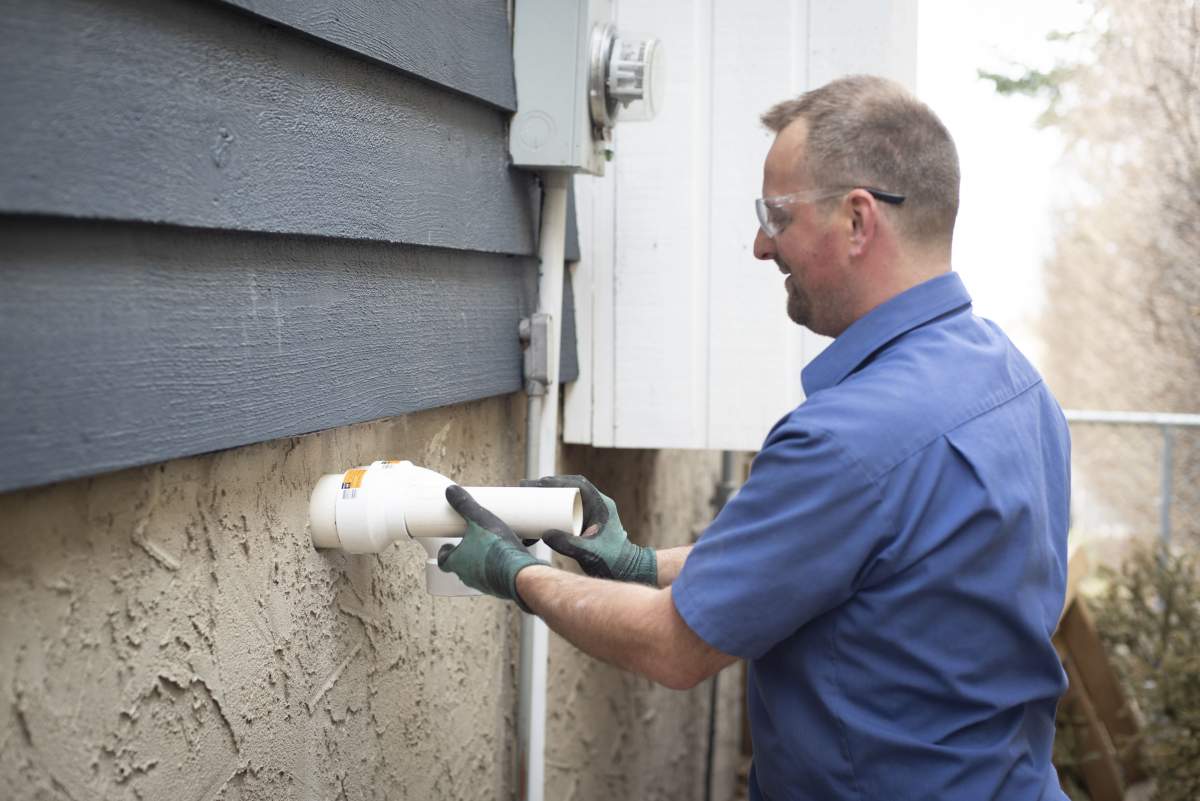 When you’re planning a furnace replacement, there are a few furnace vent replacement options which are important to consider to limit your family’s risk of carbon monoxide (CO) exposure. Gas furnaces are a reliable and efficient home heating method, but they do produce combustion exhaust fumes that can contain CO gas. Your HVAC contractor is your best source of advice on the right type of vent for your home, but here’s a brief guide on the three available choices.
When you’re planning a furnace replacement, there are a few furnace vent replacement options which are important to consider to limit your family’s risk of carbon monoxide (CO) exposure. Gas furnaces are a reliable and efficient home heating method, but they do produce combustion exhaust fumes that can contain CO gas. Your HVAC contractor is your best source of advice on the right type of vent for your home, but here’s a brief guide on the three available choices.
1. Sidewall Venting (High efficiency appliances)
This type of venting uses a 1 or 2 pipe system. An intake and an exhaust pipe are run separately and can be placed through almost any exterior wall, so they provide greater placement flexibility for a new furnace. Venting can also be vertically vented through the roof (be wary as there can be unforeseen problems with venting through the roof as they are not easily maintained). Separate venting pipes are an optimal choice here as well.
NOTE – In Non-Direct Vent installations, combustion air is taken from indoors or ventilated attic or crawlspace and flue gases are discharged outdoors. In Direct Vent installations, combustion air is taken from outdoors and flue gases are discharged outdoors.
2. Concentric Venting (High efficiency appliances)
Concentric venting is also common. Concentric venting features two same size vent pipes fitted together; to a smaller, inner pipe takes exhaust fumes outdoors, while a larger, outer pipe brings fresh combustion air into your furnace. Concentric vents can be placed horizontally and routed through an exterior wall, or vertically and vented through the roof (be wary as there can be unforeseen problems with venting through the roof as they are not easily maintained). Separate vent pipes (one for exhausting air and a separate for bringing in fresh air) is the optimal way to go.
3. Natural Furnace Vents (Low efficiency appliances)
Also known as a “type B”, this vent was the most common and least expensive used with gas furnaces back in the day. A natural vent pipe is attached to the furnace and run vertically up through the roof. This allows hot combustion exhaust fumes to rise and exit through the roof on their own, in a natural manner. This is often done through the existing chimney which can sometimes be a problem in itself so be wary of unforeseen problems. Another downside of this type of venting is that these toxic combustion fumes can backdraft under certain circumstances, which means carbon monoxide might enter your air supply.
If you’d like to learn more about the different furnace venting options for your Calgary home, contact us at Arpi’s Industries.
Credit/Copyright Attribution: “Mert-Toker”


